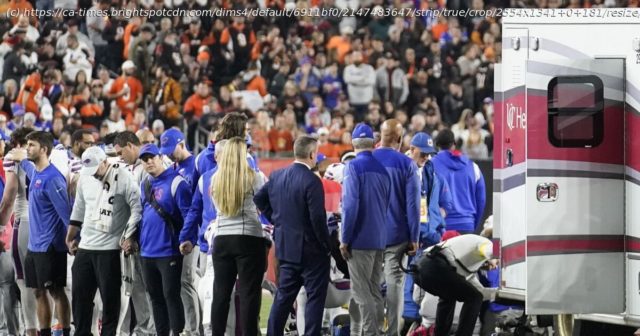After Damar Hamlin suffered a cardiac arrest on the football field, fans have asked whether COVID-19 vaccines could have played a role. Medical experts say the answer is almost certainly no.
Damar Hamlin, the 24-year-old safety with the Buffalo Bills, is not your usual victim of a heart attack.
Yet Hamlin on Monday night collapsed roughly nine minutes into the first quarter of a nationally televised football game against the Cincinnati Bengals. Medical personnel on the turf at Paycor Stadium restarted his quivering heart, and he was admitted to University of Cincinnati Medical Center, where he remained in critical condition Tuesday.
Heart disease is the leading cause of death in the United States, killing nearly 70,000 each year. An athlete who plays at the top of a sport that requires strength, superb conditioning and a high tolerance for physical punishment is not the typical victim.
That has led cardiologists and football fans alike to ask: Why did Hamlin’s heart stop?
They pondered the velocity and impact point of the hit Hamlin had just meted out. They contemplated his recent illnesses, his medications and his COVID-19 vaccinations. A few acknowledged the grim possibility that his heart had been a ticking time bomb since birth.
Those lines of speculation suggest very different explanations for the highly improbable scenario that played out Monday night.
Sudden cardiac arrest can be the result of trauma, a side effect of medication or a repercussion of heart muscle damage incurred by a viral infection. It can be the predictable outcome of a chronic disease or the first indication of a disease written into a patient’s genes at conception.
Sometimes more than one of these contributors is present, muddying the picture.
For doctors trying to keep Hamlin alive, diagnostic tests that create three-dimensional pictures of his heart muscle at work, listen to its rhythms and scan his DNA for telltale mutations may provide clues to what happened.
Home
United States
USA — mix COVID-19 vaccines almost certainly didn't cause Damar Hamlin's cardiac arrest. Here's what...






